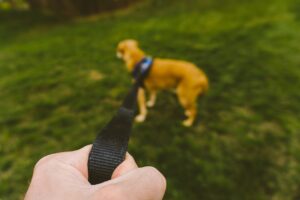Hidden mold poses significant health risks that often go unnoticed until they manifest in more severe forms. Mold spores are ubiquitous in the environment, but when they find a damp, warm place to thrive indoors, they can lead to various health issues. Individuals exposed to mold may experience respiratory problems, allergic reactions, and even chronic conditions.
Symptoms can range from mild irritations, such as sneezing and skin rashes, to more severe reactions like asthma attacks and respiratory infections. The risk is particularly pronounced for vulnerable populations, including children, the elderly, and those with pre-existing health conditions. Moreover, the long-term exposure to mold can lead to more serious health complications.
Research has shown that certain types of mold produce mycotoxins, which can be harmful when inhaled or ingested. These toxic compounds can affect the immune system and may even lead to neurological issues in extreme cases. Understanding these health risks is crucial for homeowners and tenants alike, as it underscores the importance of vigilance in maintaining a mold-free environment.
Key Takeaways
- Hidden mold poses serious health risks, including respiratory issues and allergies.
- Common hiding spots for mold growth include behind walls, under carpets, and in damp basements.
- Professional mold inspections are crucial for identifying hidden mold and assessing the extent of the problem.
- DIY mold detection can be dangerous and ineffective, leading to incomplete removal and potential health hazards.
- Early detection and prevention of mold growth is essential for protecting indoor air quality and property value.
Identifying Common Hiding Spots for Mold Growth
Overlooked Areas
Areas that are frequently overlooked include behind walls, under carpets, and within HVAC systems. These spaces often provide the moisture and darkness that mold spores need to flourish.
Common Breeding Grounds
Bathrooms and kitchens are notorious for mold growth due to their high humidity levels. However, mold can also develop in less obvious places, such as basements and attics, where leaks or condensation may go unnoticed. Another common hiding spot for mold is around windows and doors, where condensation can accumulate.
Prevention and Inspection
This moisture creates an ideal breeding ground for mold spores. Additionally, any area that has experienced water damage—whether from a leaky roof, burst pipe, or flooding—should be inspected thoroughly for signs of mold growth. By identifying these common hiding spots, homeowners can take proactive measures to prevent mold from taking hold in their living spaces.
The Role of Professional Mold Inspections
Professional mold inspections play a critical role in identifying hidden mold and assessing its impact on indoor environments. Trained inspectors utilize specialized equipment and techniques to detect mold that may not be visible to the naked eye. They often employ moisture meters and thermal imaging cameras to pinpoint areas of concern, ensuring a comprehensive evaluation of the property.
This level of expertise is invaluable, as it allows for the identification of mold growth before it becomes a significant health hazard. Furthermore, professional inspections provide homeowners with peace of mind. Knowing that a qualified expert has thoroughly assessed their property can alleviate concerns about hidden mold and its potential health risks.
In addition to identifying existing mold issues, professionals can offer recommendations for remediation and prevention strategies tailored to the specific needs of the property. This proactive approach not only addresses current problems but also helps prevent future occurrences.
The Dangers of DIY Mold Detection
| DIY Mold Detection Method | Accuracy | Cost | Time Required |
|---|---|---|---|
| Mold Testing Kits | Varies, often unreliable | 10 – 100 | Several days to weeks |
| Visual Inspection | Low, may miss hidden mold | N/A | Depends on size of area |
| DIY Mold Remediation | Can spread mold spores | Varies based on products used | Several hours to days |
While some homeowners may consider DIY methods for detecting mold, these approaches often come with significant risks. Many DIY techniques rely on visual inspections or simple tests that may not accurately identify hidden mold growth. For instance, using home testing kits can yield false positives or negatives, leading individuals to either overreact or underestimate the severity of a mold problem.
Without proper training and equipment, homeowners may miss critical signs of mold presence. Additionally, attempting to address mold issues without professional guidance can exacerbate the problem. Disturbing mold during a DIY inspection can release spores into the air, increasing the risk of exposure for those in the vicinity.
Moreover, without a thorough understanding of mold remediation techniques, individuals may inadvertently create conditions that promote further growth. Therefore, while DIY detection may seem appealing due to its cost-effectiveness, it often lacks the reliability and safety that professional inspections provide.
The Importance of Early Detection and Prevention
Early detection of mold is paramount in preventing extensive damage to both health and property. When mold is identified promptly, it can be addressed before it spreads and becomes a more significant issue. Regular inspections and monitoring of high-risk areas can help catch potential problems early on.
Homeowners who prioritize early detection are not only safeguarding their health but also protecting their investment in their property. Prevention strategies are equally important in maintaining a mold-free environment. Simple measures such as controlling humidity levels, ensuring proper ventilation, and promptly addressing leaks can significantly reduce the likelihood of mold growth.
By adopting these proactive approaches, individuals can create an inhospitable environment for mold spores, thereby minimizing the risk of future infestations.
How Mold Detection Can Protect Your Property Value
Mold detection is not just about health; it also plays a crucial role in protecting property value. Homes with hidden mold issues can suffer significant depreciation if left unaddressed. Potential buyers are often wary of properties with a history of mold problems due to the associated health risks and remediation costs.
A thorough inspection can uncover hidden issues before they become apparent during a sale, allowing homeowners to address them proactively. Moreover, having documentation of regular mold inspections can enhance a property’s marketability. Buyers are more likely to feel confident in purchasing a home that has been regularly monitored for mold issues.
This transparency not only builds trust but also demonstrates responsible homeownership. In this way, investing in mold detection services can ultimately pay off by preserving or even increasing property value over time.
The Impact of Hidden Mold on Indoor Air Quality
Hidden mold has a profound impact on indoor air quality, which is often overlooked by homeowners. As mold spores proliferate in enclosed spaces, they can become airborne and circulate throughout the home. This contamination can lead to poor air quality, which poses health risks for occupants.
Individuals may experience symptoms such as headaches, fatigue, and respiratory issues as a result of prolonged exposure to contaminated air. Improving indoor air quality requires addressing hidden mold issues promptly. Regular inspections and remediation efforts can help ensure that air quality remains at healthy levels.
Additionally, implementing proper ventilation systems and air purifiers can further mitigate the effects of airborne mold spores. By prioritizing indoor air quality through effective mold detection and remediation strategies, homeowners can create a healthier living environment for themselves and their families.
The Link Between Hidden Mold and Allergies
The connection between hidden mold and allergies is well-documented in medical literature. Mold spores are known allergens that can trigger various allergic reactions in sensitive individuals. Symptoms may include sneezing, runny nose, itchy eyes, and skin irritations.
For those with asthma or other respiratory conditions, exposure to mold can exacerbate symptoms and lead to severe health complications. Understanding this link emphasizes the importance of addressing hidden mold issues promptly. Homeowners should be vigilant about monitoring their living spaces for signs of moisture or water damage that could lead to mold growth.
By taking proactive measures to detect and remediate mold early on, individuals can significantly reduce their risk of developing allergies or worsening existing conditions.
The Importance of Thorough Mold Remediation
Once hidden mold has been detected, thorough remediation is essential to ensure that it does not return. Mold remediation involves not only removing visible mold but also addressing the underlying causes that allowed it to thrive in the first place. This process often requires specialized equipment and techniques to ensure that all traces of mold are eliminated from the environment.
Effective remediation also includes repairing any water damage and improving ventilation to prevent future growth. Homeowners should work with professionals who have experience in comprehensive mold remediation strategies to ensure that the problem is fully resolved. By investing in thorough remediation efforts, individuals can protect their health and maintain a safe living environment.
The Benefits of Regular Mold Inspections
Regular mold inspections offer numerous benefits beyond just identifying existing problems. These inspections serve as a preventive measure that helps homeowners stay ahead of potential issues before they escalate into significant health hazards or costly repairs. By scheduling routine inspections—ideally at least once a year—individuals can ensure that their homes remain free from hidden mold growth.
Additionally, regular inspections foster peace of mind for homeowners who may be concerned about their living environment’s safety. Knowing that professionals are monitoring their property for potential issues allows individuals to focus on other aspects of home maintenance without constant worry about hidden dangers lurking within their walls.
The Role of Technology in Detecting Hidden Mold
Advancements in technology have revolutionized the way hidden mold is detected within homes and buildings. Modern tools such as thermal imaging cameras and moisture meters allow inspectors to identify areas at risk for mold growth without invasive procedures. These technologies enable professionals to pinpoint problem areas quickly and accurately, leading to more efficient inspections.
Furthermore, emerging technologies like air sampling devices provide real-time data on airborne spores, allowing for immediate action if elevated levels are detected. As technology continues to evolve, it will undoubtedly enhance the effectiveness of mold detection efforts while providing homeowners with greater assurance regarding their indoor environments’ safety. Embracing these technological advancements is essential for anyone looking to maintain a healthy living space free from hidden mold threats.
FAQs
What is hidden mold detection?
Hidden mold detection refers to the process of identifying and locating mold growth that is not easily visible or accessible. This can involve using specialized equipment and techniques to detect mold behind walls, under flooring, or in other hidden areas.
Why is hidden mold detection important?
Hidden mold can pose serious health risks and cause structural damage to buildings. Identifying and addressing hidden mold early can prevent these issues from escalating and causing further harm.
How is hidden mold detected?
Hidden mold can be detected using a variety of methods, including infrared thermography, moisture meters, and air sampling. These techniques can help identify areas of moisture and potential mold growth that may not be visible to the naked eye.
Who should consider hidden mold detection?
Anyone who suspects the presence of mold in their home or building, especially in areas that are not easily visible, should consider hidden mold detection. This includes homeowners, property managers, and building inspectors.
What are the health risks associated with hidden mold?
Exposure to hidden mold can cause a range of health issues, including respiratory problems, allergic reactions, and other symptoms. Prolonged exposure to mold can also contribute to the development of asthma and other respiratory conditions.
Can hidden mold be removed?
Once hidden mold is detected, it can be removed by a professional mold remediation company. The removal process may involve containment, proper disposal of contaminated materials, and thorough cleaning and disinfection of the affected area.






